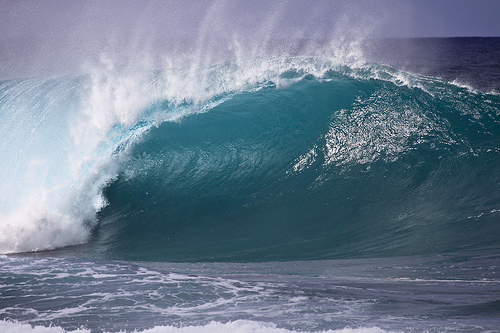Long ago, when I returned from a year of working and backpacking overseas, I lived in a shared house. A few months into my tenancy, my birthday came up and I was chuffed that my five other housemates cooked me a simple meal to celebrate. In the chilly winter air we talked over candlelight and cask wine. That night, every conversation spun around travel. As I’d recently returned from overseas my new friends asked about my adventures, and listened eagerly to my answers. And then, bang on 11 o’clock, they all stopped talking, wished me a happy birthday and left the room. One paused at the door to explain: this had been my birthday present, ‘A chance to talk about your travels,’ she said.
It’s funny how travel itself is so often exciting - yet listening to other people’s adventures can send us into comas of boredom. Not so at the recent session, International Research, at the NonfictioNow conference. The four speakers, Mieke Eerkens, Benjamin Law (The Family Law, Gaysia) Stephanie Elizondo Griest (Around the Bloc, Mexican Enough) and Desmond Barry (Cressida’s Bed, Falkland Diaries) had the rapt attention of their audience. They shared a few of their travel tales and some great tips for writers considering international research.
You may think that you’re well organised but Eerkens warns us that some things (such as accessing archives) can take much longer than expected. She approached one institution eight weeks before her arrival only to discover that they needed four months’ notice. Once there, signing documents and making other commitments chewed into her research time.
Eerkens spoke the language in the country she was researching, but many of us won’t have bi- or multi-lingual abilities. Griest says it’s ‘profoundly important for writers to learn as much as possible of the language.’ Even speaking it poorly can be an asset – it infantilises you and can help to equalise any power imbalances when you’re in a country with less power than yours, she says. Still, some of us will need translators. If you’re on a budget, Law recommends approaching local universities, and using students of translation and linguistics.
Learning the basics of the language will take you some way into another country, but trying to understand those you are researching will take you further. One of Griest’s mantras is: the subject is always, always, always, always right. ‘If they’re not right, I haven’t done my job,’ she says. ‘They are acting in their own truth and it is up to us [as researchers] to find out what that truth is.’
To help us understand our subjects Griest advises writers to ‘live the lives’ of those we’re researching as much as possible. Rent a room in their neighbourhood. Eat their foods. Hang out at their haunts. And practice humility. ‘Understand and deeply appreciate that what we do [as writers] is the greatest possible privilege,’ she says. Her respect for her subjects is so strong that Griest shows her work to them before publication. 'It’s a partnership.' Plus, no matter how careful you are you will make mistakes. (And yes, she has had to make changes and cuts as a result of this approach).
Being open to change is pivotal to writing good stories Law says. Sometimes you may not be able to get access to a subject by virtue of who you are and the cultural biases associated with this (for example your gender, your race etc. may create or remove hurdles). Barry says we can, ‘overcome suspicion by talking and engaging with as many people as possible.’
Griest’s first book, Around the Bloc started with this principle. She simply approached strangers and asked them where the orphanage was (in Russian, of course). She did this for days, until she found an orphanage that led her deeper into the story. ‘There was literally no method to my madness,’ she says, ‘I would hit the street everyday, looking around, taking notes and being there for a very, very long time.’ Being there, being open, being flexible and talking to the locals are central to successful international research, ‘But in pursuing our research, we can [inadvertently] ignore our instincts,’ Eerkens says. The story is important, but so is our safety.
Eerkens once found herself seriously considering an invitation to enter a stranger’s house in order to access photos for her research. (Even though she would think twice about this in her home-country). ‘In my eagerness to get the information I was ignoring my gut feeling,’ she says. ‘It’s easy to go along in pursuit of what your goal is, but take care.’
Eerkens also flags the importance of having an emotional outlet when researching overseas (particularly when you’re on difficult subjects, such as war). For her it was the solitude of her apartment. For others it can be hanging out with friends. As Eerkens shares this advice her fellow speakers nod. Later Law cites an occasional thought he had while researching, ‘As long as I don’t die, this will be a great story.’
Travel in itself can be a churn of fun, frustration and fear. Adding research whips up a storm of technical, cultural, emotional and physical challenges. ‘An international research project needs an idea that you’re really in love with,’ says Barry.
Once you find a story you love, you’ll be all set to tell others of your adventures. And if you write it well, you may even get an opportunity to regale your readers far beyond my 11 o’clock birthday curfew.
An audio file of this panel on International Research will be available on the nonfictionlab.net.au website in early 2013.







